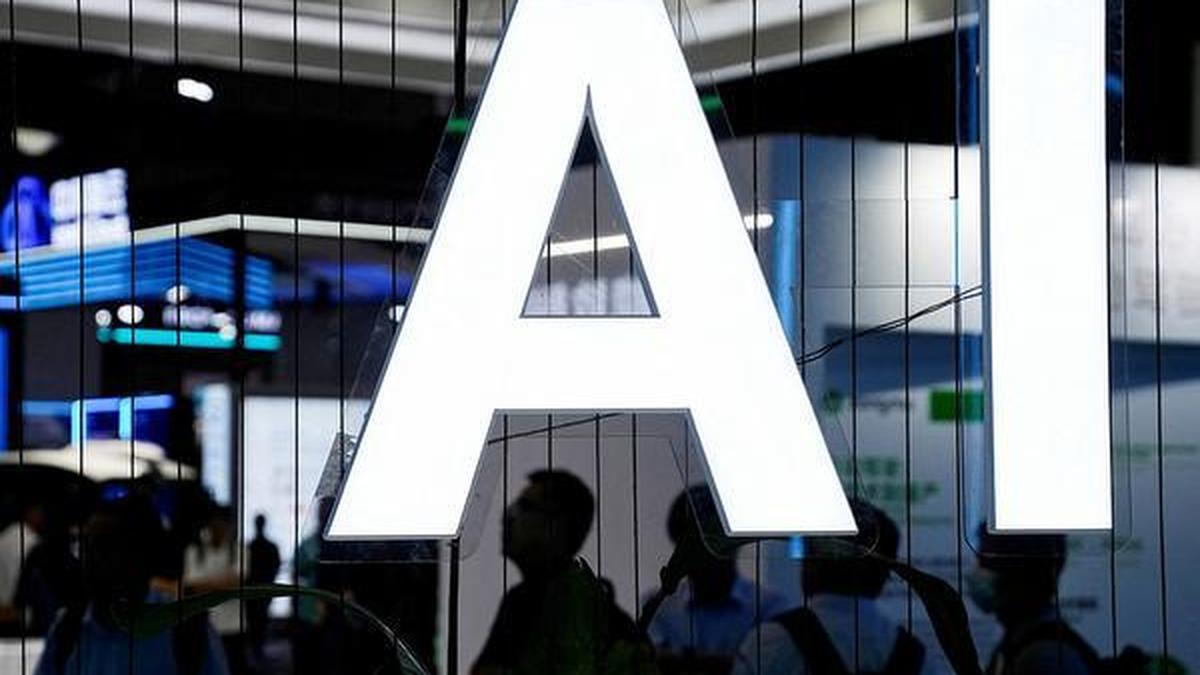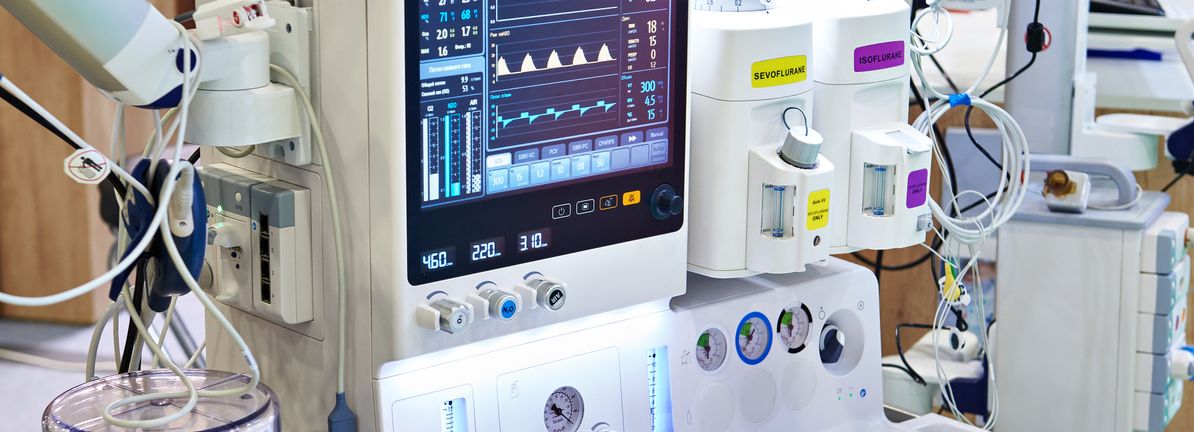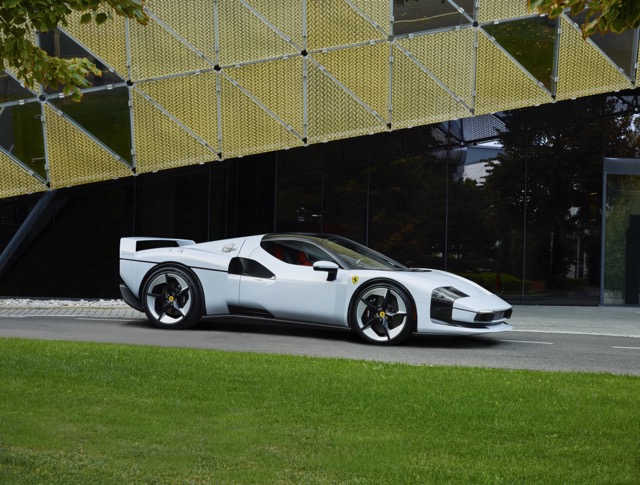Japanese game developer Pocketpair has confirmed that it will not provide funding to game projects that use generative AI. John Buckley, communications director and publishing manager at Pocketpair, said that…
Blog
-

New Immune Cell Marker Offers Clues to Kidney Disease Progression
A previously unrecognized immune-cell population that may serve as a sensitive indicator of kidney disease severity and future progression risk was uncovered by research from Japan.1
The prospective observational study, published in
Nephrology ,…Continue Reading
-

Investors use dotcom era playbook to dodge AI bubble risks
Major investors, spooked by AI exuberance yet wary of betting against it, are shifting from hyped-up stocks into potential next-in-line winners, reviving a strategy from the 1990s dotcom era that helped some sidestep the crash.
As U.S. stocks have hit successive records and AI chipmaker Nvidia’s valuation has surged beyond $4 trillion, professional investors have been trying to find ways to make money from the bull market while avoiding excessive risk.
Some are looking back to the 1990s internet boom, which spread from startups to telecoms and tech, and where hedge funds rode the wave by flipping out of highly-valued stocks before they peaked and picking others that had room to rise.
“What we are doing is what worked from 1998 to 2000,” said Francesco Sandrini, multi-asset head and Italy CIO at Europe’s largest asset manager Amundi.
He highlighted signs of irrational exuberance on Wall Street, such as frenzied trading in risky options pegged to the share prices of big AI stocks. But he said he expected the new tech enthusiasm to continue and hoped to bank gains via bets on reasonably valued assets that might rally next.
Sandrini said this involved trying to find “the highest growth opportunities that so far the market had failed to spot”, with moves into software groups, robotics and Asian tech.
Other investors also expected to edge out of Wall Street’s Magnificent Seven stocks after shares in Nvidia more than tripled in two years, but want to keep their diversification within the AI sphere.
ASSET MANAGERS NEED TO BE NIMBLE TO RIDE THE WAVE
“The odds of this (AI boom) being a bust are very high because you’ve got companies spending trillions and all fighting for the same market that does not yet exist,” said Goshawk Asset Management CIO Simon Edelsten, who worked on telecom IPOs at stockbroker Dresdner Kleinwort Benson in London in 1999.
He expected the next phase of AI fever to spread from Nvidia and others like Microsoft and Alphabet into
related sectors.Timing the phases of a bubble has historically been a way to play it without the risk of trying to call the peak too early.
A study by economists Markus Brunnermeir and Stefan Nagel showed that hedge funds mostly did not bet against the dotcom bubble, but rode it skillfully enough to beat the market by about 4.5% per quarter from 1998-2000 and avoid the worst of the downturn.
They shed high-priced internet stocks in time to recycle profits into others before they caught the attention of less sophisticated investors.
“There were good profits to be made for the fleet of foot even during 2000 when the top came,” Edelsten at Goshawk said, adding the current market environment was similar to 1999.
He favoured IT consultants and Japanese robotics groups that can potentially pick up revenues from AI heavyweights, in what he said was the typical chronology of a market gold rush.
“When someone strikes gold, (you) buy the local hardware store where the prospectors will buy all their shovels.”
INVESTORS TRY TO STAY IN AI WITHOUT EXCESSIVE RISK
Investors are also attempting to benefit from the trillion of dollars so-called hyperscalers such as Amazon, Microsoft and Alphabet are committing to AI data centres and advanced chips without taking on more direct exposure to these companies.
Fidelity International multi-asset manager Becky Qin said uranium was her favoured new AI trade because power-hungry AI data centres could gobble up nuclear energy.
Kevin Thozet, investment committee member at asset manager Carmignac, was taking profits on Magnificent Seven stocks and building up a position in Taiwan’s Gudeng Precision, which makes delivery boxes for AI chipmakers including TSMC.
Asset managers are also concerned that the rush to build data centres could result in overcapacity, as in the fiber-optic cable boom in the telecoms industry.
“In any new technological paradigm we don’t get from A to B without excesses along the way,” said Pictet Asset Management senior multi-asset strategist Arun Sai.
Even though top AI stocks like Microsoft, Amazon, and Alphabet are being powered by strong earnings, he still sees “the building blocks of a bubble” and favours Chinese stocks as a hedge if rapid AI advancements in China sap Wall Street’s AI enthusiasm.
Some investors, though, do not favour this relative value approach to AI investing as a way to mitigate future losses.
Oliver Blackbourn, portfolio manager at Janus Henderson, said he was hedging his U.S. tech positions with European and healthcare assets lest an AI stock crash takes the U.S. economy down with it.
He said it was impossible to forecast how long the AI craze would roll on because calling the peak was usually only possible with hindsight.
“We’re in 1999 until the bubble pops.”
Published – October 25, 2025 09:55 am IST
Continue Reading
-

Real-World Outcomes From Third-Line SCLC Treatment Show Need for More Options
Patients with extensive-stage
small cell lung cancer (ES-SCLC) see little benefit from third-line (3L) therapies, according to a new analysis of real-world outcomes.1 The authors of the analysis say it underscores the “urgent” need for novel…Continue Reading
-

Should Zimmer Biomet’s AI-Powered Orthopedic Robotics Launch Prompt Action From ZBH Investors?
-
Earlier this week, Zimmer Biomet Holdings showcased its latest orthopedic robotics and digital health innovations, including FDA-cleared mBos TKA System and the recently acquired Monogram Technologies robotic platform, at the annual meeting of the American Association of Hip and Knee Surgeons.
-
A standout revelation was the integration of AI-driven and autonomous technologies into the company’s expanding knee and hip portfolios, reflecting Zimmer Biomet’s commitment to advancing surgical precision and connected care solutions.
-
We’ll examine how Zimmer Biomet’s integration of AI-driven orthopedic robotics could reshape the long-term outlook for its investment narrative.
Trump has pledged to “unleash” American oil and gas and these 22 US stocks have developments that are poised to benefit.
To be a shareholder in Zimmer Biomet, you need to believe in the power of innovation in orthopedic robotics and digital health to drive demand for advanced surgical solutions. This week’s showcase of FDA-cleared and AI-powered products could energize sentiment but is unlikely to meaningfully shift the company’s near-term reliance on successful product launches; ongoing industry pricing pressures still remain the key headwind.
Among the latest announcements, the FDA clearance of the mBos TKA System stands out for its relevance, as it highlights Zimmer Biomet’s efforts to keep pace in the competitive race for autonomous robotics and supports the company’s narrative of product-driven growth, even as full regulatory approvals for other key technologies remain pending.
In contrast, investors should be aware of increasing pricing pressures and the consequences if these persist through…
Read the full narrative on Zimmer Biomet Holdings (it’s free!)
Zimmer Biomet Holdings is projected to reach $9.2 billion in revenue and $1.3 billion in earnings by 2028. This outlook assumes a 5.5% annual revenue growth rate and an earnings increase of about $476 million from the current $823.5 million.
Uncover how Zimmer Biomet Holdings’ forecasts yield a $110.92 fair value, a 8% upside to its current price.
ZBH Community Fair Values as at Oct 2025 Simply Wall St Community members estimate fair value for Zimmer Biomet anywhere between US$95 and US$167.48 per share, with three unique perspectives. As these opinions range widely, consider the risk of ongoing pricing pressures that could challenge margin recovery and ultimately affect future earnings.
Explore 3 other fair value estimates on Zimmer Biomet Holdings – why the stock might be worth 8% less than the current price!
Continue Reading
-
-

Vaisala (HLSE:VAIAS) Earnings Beat 5-Year Trend, Margin Gains Reinforce Bullish Narratives
Vaisala Oyj (HLSE:VAIAS) delivered another robust earnings performance, with profits expanding at 16.7% over the past year and a five-year compound annual growth rate of 12.8%. The company’s net profit margin rose to 10.9% from last year’s 10.1%, underscoring improved efficiency. Revenue growth of 6.1% per year continues to outpace the broader Finnish market. With forward earnings growth projected at 13.8% per year and no notable risks flagged, investors are likely to focus on the momentum in margins and the sustainability of this positive trend.
See our full analysis for Vaisala Oyj.
Next up, we’ll put the latest numbers head-to-head with the current narratives, breaking down where sentiment aligns with the data and where surprises might emerge.
See what the community is saying about Vaisala Oyj
HLSE:VAIAS Earnings & Revenue History as at Oct 2025 -
Vaisala’s current share price of €44.95 trades below its DCF fair value estimate of €49.76, signaling about an 11% discount to modeled intrinsic worth.
-
According to analysts’ consensus view, broader value discussions also reference a Price-To-Earnings ratio of 25.7x. This is just below the European Electronic industry average of 26x and above the peer group’s 21.4x.
-
This sector-relative valuation is seen as reasonable, especially since earnings have expanded by 12.8% per year over the past five years. Consensus believes this trend supports the view that Vaisala’s quality and growth justifies its mild premium to local peers.
-
At the same time, consensus highlights potential upside, noting the current share price remains 17.3% below the latest analyst price target of €53.60.
-
See what else analysts are tracking in Vaisala’s growth and value story: 📊 Read the full Vaisala Oyj Consensus Narrative.
-
Rapid growth in digital services, such as subscription-based offerings, has driven segment-level sales expansion. Recurring software revenues (e.g., Xweather) saw 53% year-on-year growth, raising hopes for additional gross margin upside as these higher-margin business lines scale.
-
Consensus narrative spotlights diversification into digital and industrial segments as a catalyst for dependable, broad-based margin growth.
-
With analysts forecasting profit margins to rise from 10.9% to 12.3% over three years, the consensus story emphasizes these gains could make earnings quality more resilient, especially as digitalization and R&D outlays underpin proprietary advantages for Vaisala.
-
This long-term thesis leans on proven agility in managing price increases and coping with tariff impacts, providing some protection in an unpredictable environment.
-
Continue Reading
-
-

Mounira Al Solh: Nassib’s Bakery—Distributing Warmth – Announcements
Kunsthuis SYB is excited to introduce Nassib’s Bakery: Distributing Warmth, a project initiated by Mounira Al Solh, transforming SYB’s front room into a saj bakery this fall.
Nassib’s Bakery: Distributing Warmth is a re-enactment and…
Continue Reading
-

Ferrari SC40 revives the spirit of the F40 with a modern, hybrid twist
- The Ferrari SC40 is a one-off berlinetta based on the 296 GTB, producing 610kW and 740Nm of torque.
- Its design pays tribute to the 1987 F40, featuring angular geometry and a fixed rear wing.
- Carbon-Kevlar elements and hybrid V6 tech link the…
Continue Reading
-

Metropolitan Bank Holding (MCB) Net Margin Rises, Reinforcing Bullish Valuation Narrative
Metropolitan Bank Holding (MCB) delivered net profit margins of 24.3%, up from last year’s 23.1%, with average annual earnings growth of 7.6% over the past five years. This year’s 6.5% earnings growth trails the longer-term average, but analysts see a sharp acceleration ahead. They forecast 28.7% annual earnings growth and 18.4% annual revenue growth, both well above the US market. At $70.9, shares trade considerably below some fair value estimates, adding to the positive sentiment around the company’s high-quality earnings and strong value positioning.
See our full analysis for Metropolitan Bank Holding.
The next step unpacks how these figures compare with the market’s prevailing narratives, highlighting where consensus is confirmed and where surprises may lie.
See what the community is saying about Metropolitan Bank Holding
NYSE:MCB Earnings & Revenue History as at Oct 2025 -
Net profit margins expanded to 24.3%, up from 23.1% last year, building on a consistently strong five-year track record.
-
Analysts’ consensus view holds that margin expansion is being driven by investments in technology and fee-based income streams,
-
The consensus narrative notes these tech and fintech partnerships are already supporting stable funding, which helps boost profitability in markets like New York City.
-
Analysts also point out that prudent risk management and diversified loan portfolios have contributed to earnings durability by limiting credit risk and supporting margins versus peers.
-
-
To see how analysts’ consensus aligns with deeper margin trends and future expectations, check out the full story for Metropolitan Bank Holding. 📊 Read the full Metropolitan Bank Holding Consensus Narrative.
-
Earnings are projected to grow 28.7% per year and revenue 18.4% per year, both far above the US market averages of 15.5% and 10% respectively.
-
Analysts’ consensus view emphasizes that these growth projections depend on continuing digital transformation and low-cost deposit growth,
-
The narrative highlights that successful integration of an advanced tech stack and growth in core deposit verticals are expected to underpin higher noninterest income and expanded lending for the next several years.
-
However, they acknowledge risks such as delays in tech upgrades or increased deposit competition, which could pressure both margins and growth if not managed carefully.
-
-
Shares trade at $70.90, creating a wide gap versus the DCF fair value estimate of $151.56 and the peer price-to-earnings average of 18x, with Metropolitan at just 11.6x.
-
Analysts’ consensus narrative describes this valuation as reflecting both the company’s profitable growth and some caution around concentration risks,
-
The below-fair-value price aligns with the company’s strong earnings quality and long-term digital growth opportunities, according to consensus forecasts.
-
Still, the narrative weighs risks like reliance on commercial real estate and regulatory scrutiny, which could explain why the market offers such a substantial discount to estimated fair value.
-
Continue Reading
-

